Join in on a fabulously educational journey into the world of owl coloring pages, where artistry and nature intertwine to ignite your creativity. These fun designs, featuring the mesmerizing beauty of owls, offer a delightful escape from the demands of daily life. Whether you’re a seasoned artist seeking inspiration or simply looking for a therapeutic and relaxing activity, owl coloring sheets provide a perfect canvas for self-expression. Get ready to immerse yourself in the world of colors, patterns, and the timeless wisdom of these magnificent creatures.
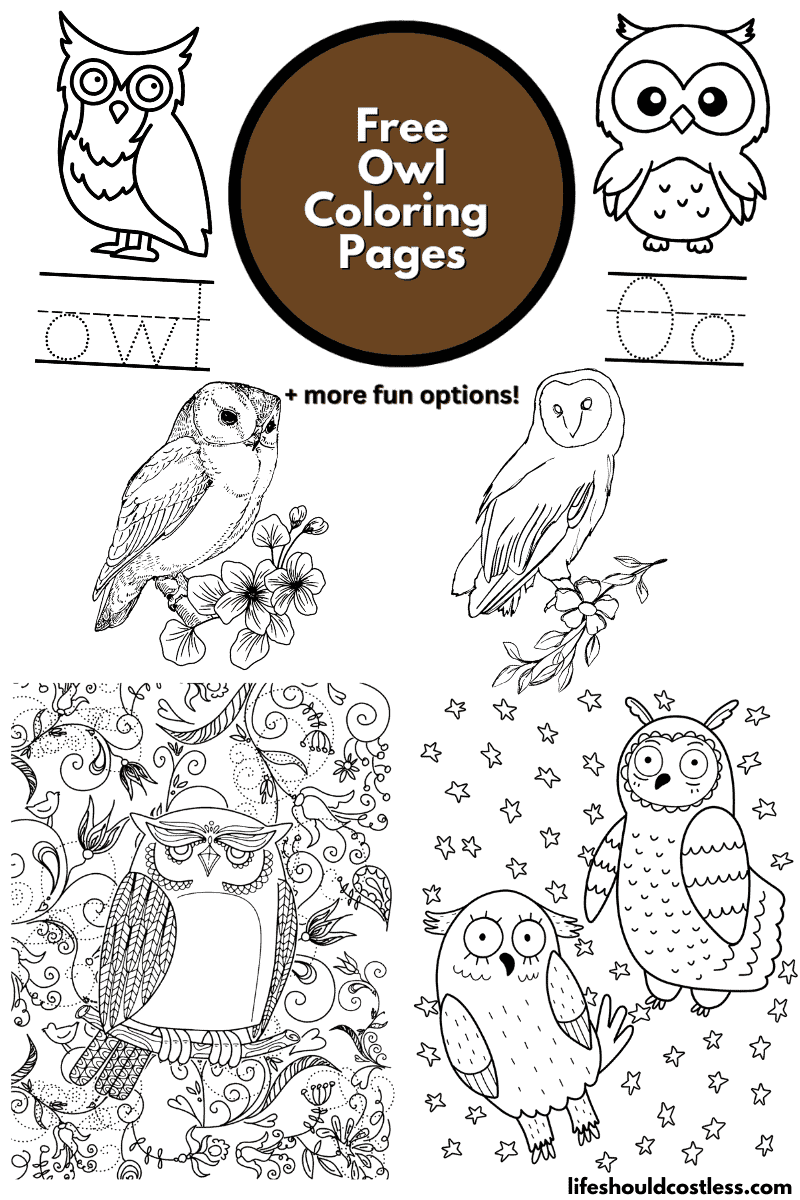
Feel free to choose any design that catches your eye, download the free PDF template, print it, and enjoy coloring to your heart’s delight.
Alternatively, you can use them as embroidery patterns or draw inspiration for those delicate fine line tattoos.
Owl facts
For those who are new to my coloring pages, it’s important to note that I aim to provide you with an educational experience alongside the joy of coloring.
I believe in offering you the opportunity to learn about the subject matter, allowing you to seamlessly transform your coloring session into a valuable lesson.
So, without further ado, let’s delve into the educational journey together!
Here are some fun and interesting, simplified, facts about owls (my reference source can be found here):
- Owls belong to the order Strigiformes and are found in various habitats worldwide.
- With about 220 species, owls are incredibly diverse, ranging from tiny owls weighing a few ounces to larger species weighing several pounds.
- Owls have unique adaptations for hunting, such as specialized feathers for silent flight, exceptional night vision, and incredibly acute hearing.
- Unlike most birds, owls have forward-facing eyes, providing them with binocular vision and excellent depth perception.
- Owls have a remarkable ability to rotate their heads up to 270 degrees, allowing them to scan their surroundings without moving their bodies.
- Many owl species are known for their distinct calls, which vary from hoots and screeches to whistles and hisses, serving as territorial communication or courtship displays.
- Owls have an exceptional sense of hearing due to their asymmetrical ear placement, allowing them to locate prey with pinpoint accuracy.
- These birds of prey primarily feed on small mammals like rodents, but their diet can also include insects, fish, birds, and even other owls.
- Owls regurgitate pellets composed of indigestible materials, such as bones and fur, after consuming their prey.
- Owls have soft feathers with specialized edges that reduce noise during flight, enabling them to approach their prey silently.
- Many owl species have camouflage plumage, helping them blend seamlessly with their surroundings and remain unseen by both predators and prey.
- Owls are known for their nocturnal habits, but some species, known as diurnal owls, are active during the day.
- Owls have been revered and feared in various cultures throughout history, often associated with wisdom, intelligence, and mystery.
- The barn owl is one of the most widespread owl species and can be found on every continent except Antarctica.
- Some owls, like the snowy owl and the great gray owl, have adaptations to survive in cold, snowy environments.
- Owls play an important role in controlling populations of rodents and other small animals, making them valuable for natural pest control.
- The eyesight of owls is incredibly sharp, and they have a higher number of rod cells in their retinas, which enhances their ability to see in low-light conditions.
- Owls have strong, sharp talons for capturing and gripping their prey effectively.
- Owl courtship rituals can involve elaborate displays of flight, calls, and gift offerings.
- Despite their hunting prowess, owls face various threats, including habitat loss, climate change, and collisions with vehicles and structures.
These facts provide just a glimpse into the fascinating world of owls.
Their unique characteristics and behaviors make them truly remarkable creatures worthy of admiration and study.
If you would like to continue on your quest for owl knowledge, here are some other reputable resources to learn about them:
- https://kids.britannica.com/kids/article/owl/353584
- https://www.audubon.org/news/13-fun-facts-about-owls
- https://www.pbslearningmedia.org/resource/idptv11.sci.life.oate.d4kowl/owls/
- https://www.nature.org/en-us/get-involved/how-to-help/animals-we-protect/owls/
- https://fpdcc.com/five-fun-facts-about-owls/
- To see all of my free printables, go here.
- To see an alphabetized index of all of my coloring pages, go here.
- To see all of my Animals coloring pages, go here.
- To see all of my Birds coloring pages, go here.
Printing instructions
*Keep in mind that while these coloring sheets are free, they are for personal use only. Any additional use will need written permission, from me, obtained via email. Thanks.*

How to get best results with your owl printable
From writing practice worksheets, to various fun designs, there are owl coloring options for everyone...plus, there's a built in lesson too.
Materials
- Black Ink/Toner
- Standard 8.5"x11" Printing Paper (or quality cardstock)
Tools
- Printer
- Computer/ Phone/ Or Tablet To Download To
- Colored Pencils
- Pencil Sharpener
- Eraser (optional)
Instructions
-
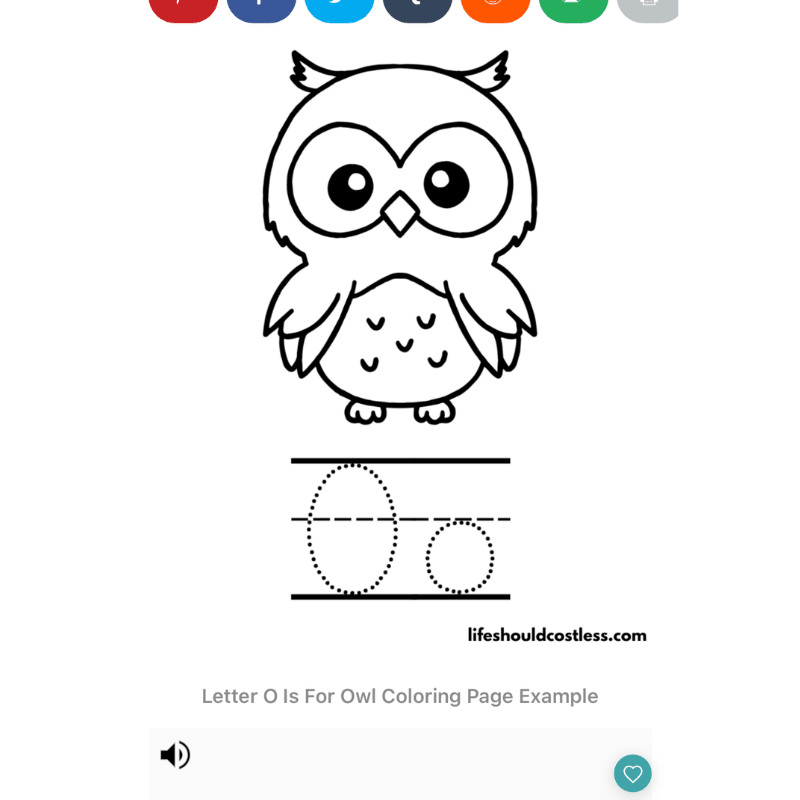 Explore the array of coloring page options and select the image or images you wish to color. The displayed sample image(s) on this page, featuring the website's watermark at the bottom, provides a preview of the complete PDF image's appearance.
Explore the array of coloring page options and select the image or images you wish to color. The displayed sample image(s) on this page, featuring the website's watermark at the bottom, provides a preview of the complete PDF image's appearance. -
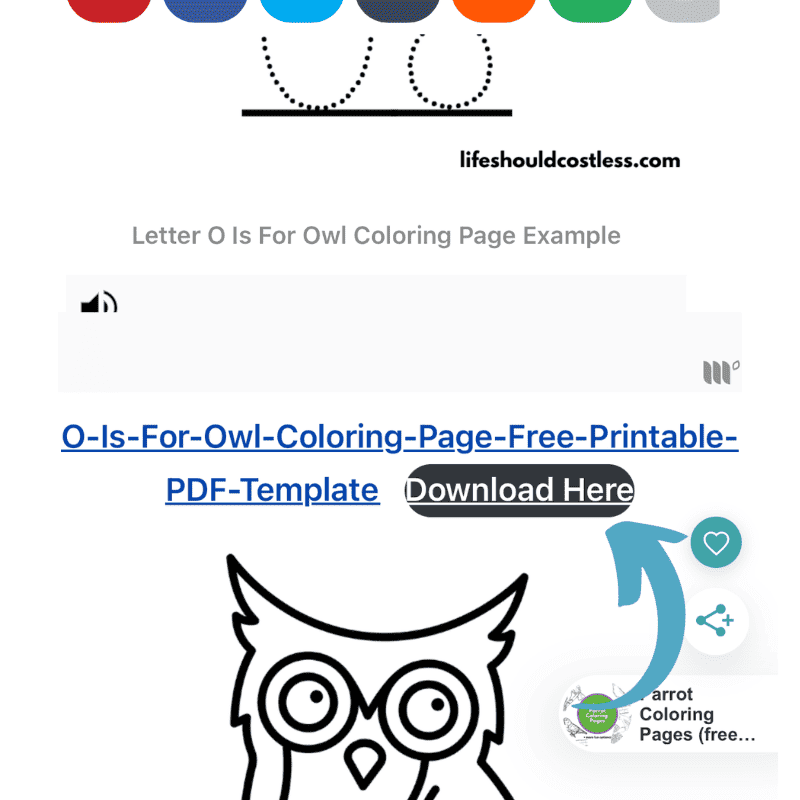 Look slightly below the desired sample image to find the "download here" button for the attached PDF file.
Look slightly below the desired sample image to find the "download here" button for the attached PDF file. -

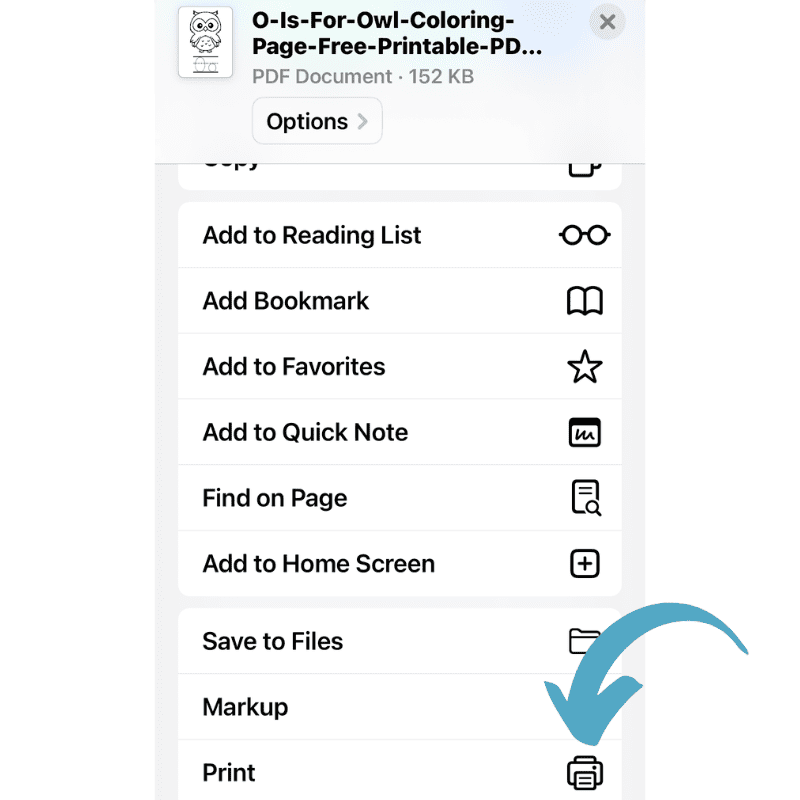 First select download, and then select the option to print.
First select download, and then select the option to print. -
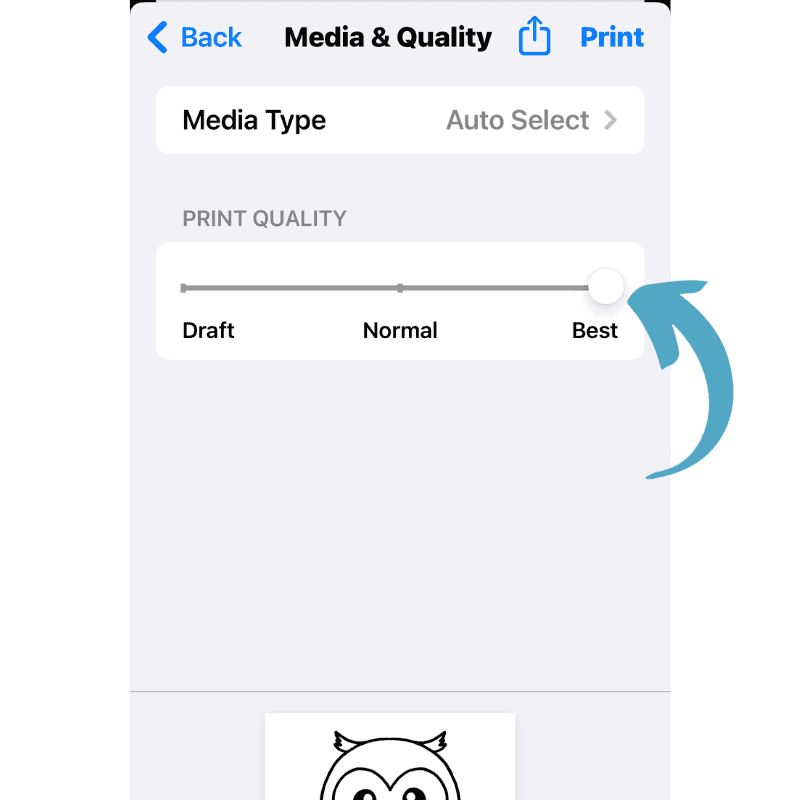 Once you're prepared to print, ensure that you choose the highest-quality print setting that's available.
Once you're prepared to print, ensure that you choose the highest-quality print setting that's available. -
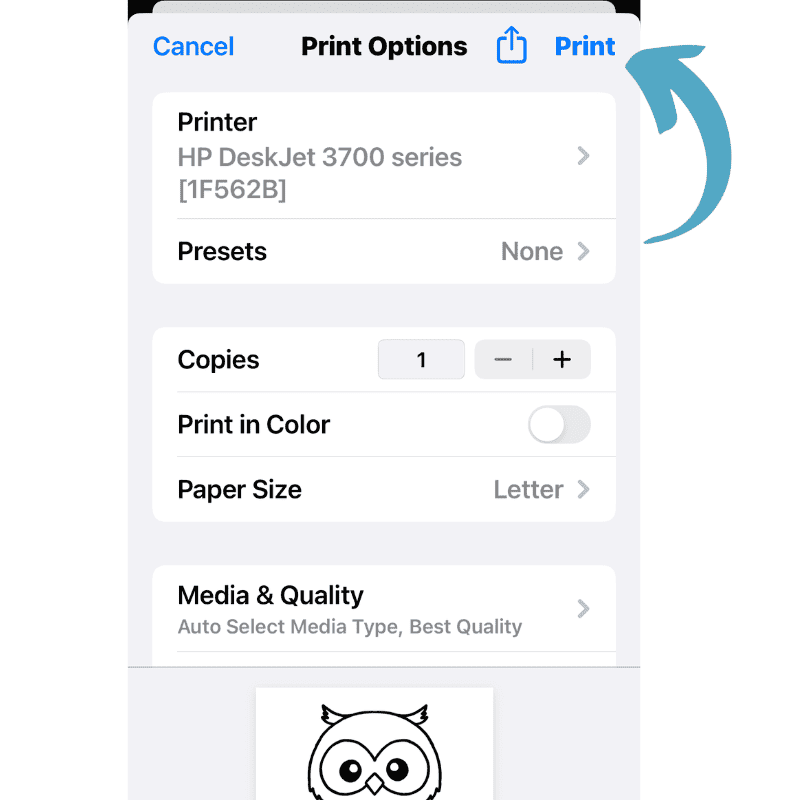 Now select "print" and send it to your desired printer of choice.
Now select "print" and send it to your desired printer of choice. 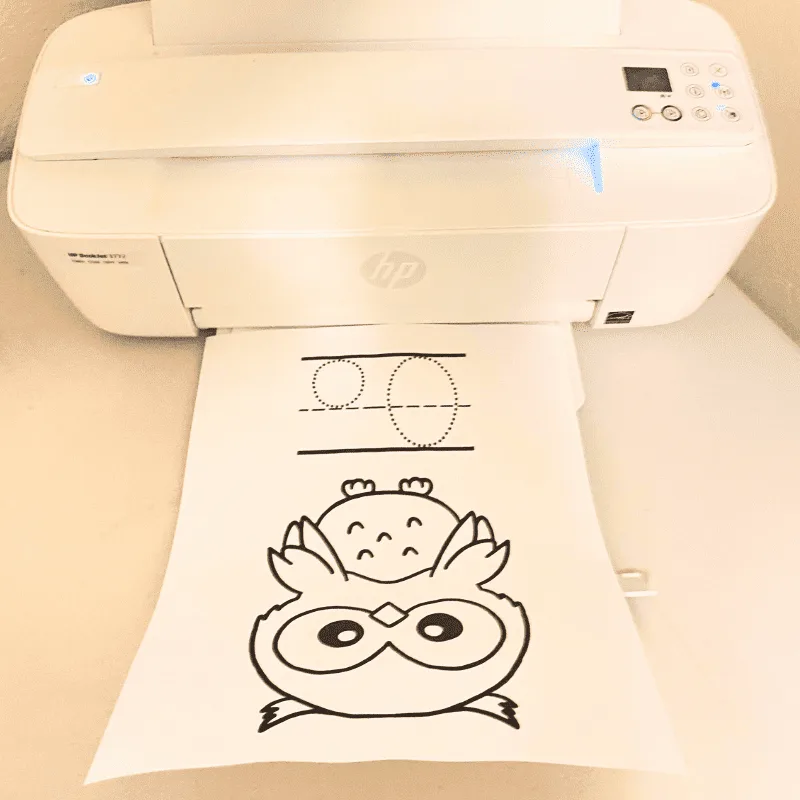 After completing the printing of your coloring sheet(s), allow a few minutes for the ink to completely dry while it remains on the printer tray. This additional step will help prevent any smudging of ink on your coloring page, which is particularly crucial if you intend to gift your artwork to someone special.
After completing the printing of your coloring sheet(s), allow a few minutes for the ink to completely dry while it remains on the printer tray. This additional step will help prevent any smudging of ink on your coloring page, which is particularly crucial if you intend to gift your artwork to someone special.-
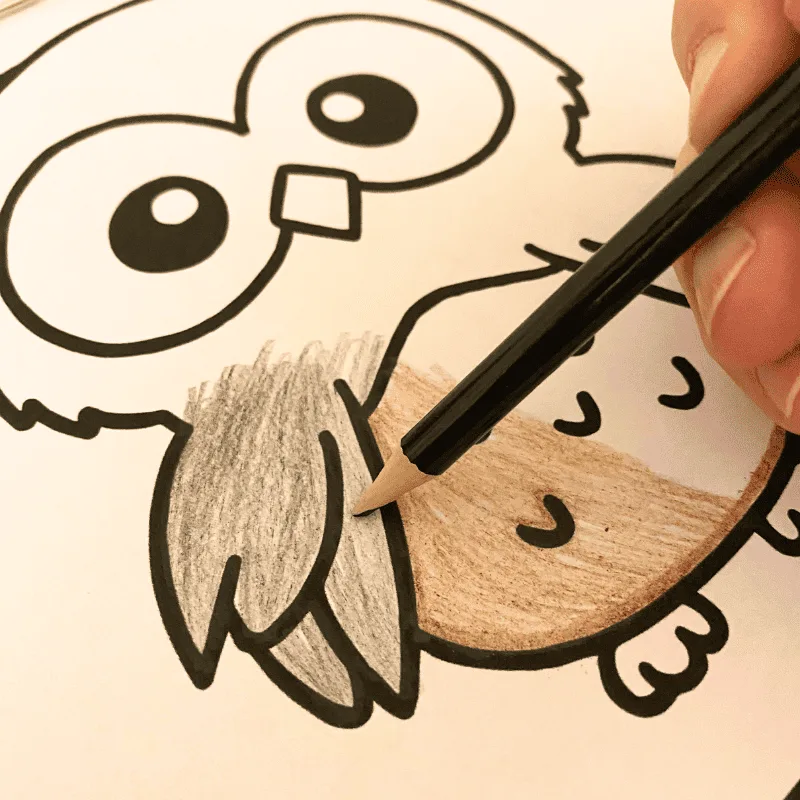 Before you begin coloring your work of art, please make sure your hands are washed well and completely dried. Next, find a clean, level surface on which to place your paper, and then let your imagination run free as you color to your hearts content.
Before you begin coloring your work of art, please make sure your hands are washed well and completely dried. Next, find a clean, level surface on which to place your paper, and then let your imagination run free as you color to your hearts content.
Notes
Ideas on what to do with these owl pictures:
You could buy some simple frames, have the images printed out onto a quality card stock at a local printing company, color them as well as you can, and they could be added to your homes decorations.
One creative gift idea for any occasion, especially for those who enjoy coloring, is to print out the images, bind them, and include a set of high-quality colored pencils or an art kit. This thoughtful gesture can brighten someone's day whenever the need arises, making it a delightful way to bring a smile to their face.
They can double as a source of inspiration for crafting detailed fine-line tattoos.
These free owl coloring pictures can also be used as embroidery patterns by simply using transfer sheets.
Obviously, you also have the choice to just print them out and enjoy endless hours of fun by coloring them as many times as you wish.
*These instructions primarily cater to iPhone users who own HP printers and are seeking to achieve the highest print quality. However, they can be similarly adapted for use with a range of other devices.
**Whenever possible, it is advisable to use the "fit to page" option before printing to ensure that the complete image is accurately transferred to your printed coloring page.
***This website employs an image optimization technique for the provided sample illustrations. While this optimization enhances web page loading speed, it does involve a slight compromise in image quality. For optimal results, we recommend downloading and directly utilizing the included PDF file. The sample image serves as a general visual preview since navigating through an entire PDF may pose challenges on certain devices, potentially limiting the ability to view the complete image in a single screenshot.
Recommended Products
Please note that I am an affiliate with Amazon.com. When you purchase through my suggested product links, the cost for you is the same but I do receive a small commission for everything in your shopping cart. Thanks so much for the support!
-
 Looney Zoo Temporary Tattoo Markers for Skin, 10 Body Markers + 20 Large Tattoo Stencils for Kids and Adults, Dual-End Tattoo Pens Make Bold and Fine Lines with Cosmetic-Grade Temporary Tattoo Ink
Looney Zoo Temporary Tattoo Markers for Skin, 10 Body Markers + 20 Large Tattoo Stencils for Kids and Adults, Dual-End Tattoo Pens Make Bold and Fine Lines with Cosmetic-Grade Temporary Tattoo Ink -
 Printworks Vanishing Embroidery Transfers, for White/Light-Colored Fabrics, 12 Sheets, Inkjet, 8.5 x 11 (00524)
Printworks Vanishing Embroidery Transfers, for White/Light-Colored Fabrics, 12 Sheets, Inkjet, 8.5 x 11 (00524) -
 U.S. Art Supply 163-Piece Mega Deluxe Art Painting, Drawing Set in Wood Box, Desk Easel - Artist Painting Pad, 2 Sketch Pads, 24 Watercolor Paint Colors, 24 Oil Pastels, 24 Colored Pencils, 60 Crayons
U.S. Art Supply 163-Piece Mega Deluxe Art Painting, Drawing Set in Wood Box, Desk Easel - Artist Painting Pad, 2 Sketch Pads, 24 Watercolor Paint Colors, 24 Oil Pastels, 24 Colored Pencils, 60 Crayons -
 eletecpro 12x16 Picture Frames Set of 5, Display 8x10 or 8.5x11 Photo Frame with Mat or 12x16 without Mat, Wall Gallery Poster Frames, Photo Frames Collage for Wall Display
eletecpro 12x16 Picture Frames Set of 5, Display 8x10 or 8.5x11 Photo Frame with Mat or 12x16 without Mat, Wall Gallery Poster Frames, Photo Frames Collage for Wall Display -
 Sacnahe Tattoo Transfer Stencil Machine Copier Printer Thermal Tattoo Kit Copier Printer With 20pcs Free Tattoo Stencil Transfer Paper Black (2023 Update Version)
Sacnahe Tattoo Transfer Stencil Machine Copier Printer Thermal Tattoo Kit Copier Printer With 20pcs Free Tattoo Stencil Transfer Paper Black (2023 Update Version) -
 PRINA Art Supplies 120-Color Colored Pencils Set for Adults Coloring Books with Sketchbook, Professional Vibrant Artists Pencil for Drawing Sketching Blending Shading, Quality Soft Core Oil Based
PRINA Art Supplies 120-Color Colored Pencils Set for Adults Coloring Books with Sketchbook, Professional Vibrant Artists Pencil for Drawing Sketching Blending Shading, Quality Soft Core Oil Based
Tips for coloring
Here are some tips and tricks to enhance your coloring experience when working with owl pictures:
- Gather reference images: Look for reference images of owls to study their colors, patterns, and textures. This will help you create a more realistic and visually appealing coloring page.
- Choose the right color palette: Consider the natural coloration of owls when selecting your color palette. Earth tones like browns, grays, and tans are commonly seen, but don’t be afraid to experiment with vibrant colors for a whimsical twist.
- Layer and blend colors: Use colored pencils or markers to layer colors gradually, building up depth and texture. Experiment with blending techniques such as burnishing or colorless blending pencils to create smooth transitions and gradients.
- Add texture and details: Enhance the realism of your owl coloring by adding fine lines or feather-like strokes to simulate the texture of owl feathers. Pay attention to details like the eyes, beak, and talons to make them stand out.
- Play with different techniques: Explore various coloring techniques such as stippling, cross-hatching, or pointillism to add visual interest and dimension to your owl artwork.
- Use complementary colors: To make your owl picture really pop, consider using complementary colors. For example, pair warm browns with cool blues or greens to create a pleasing contrast.
- Experiment with different backgrounds: Instead of leaving the background blank, try adding a touch of creativity. You can depict a forest scene, a night sky, a barn yard, or a patterned backdrop that complements the owl’s colors.
- Explore mixed media: Don’t limit yourself to just colored pencils or markers. Incorporate other media such as watercolors, pastels, or gel pens to add variety and unique effects to your coloring page.
- Pay attention to light and shadow: Observe how light falls on your owl reference image and replicate it in your coloring. Add shading and highlights to create a sense of depth and realism.
- Enjoy the process: Coloring should be a relaxing and enjoyable activity, so take your time and savor each stroke. Let your creativity flow, and don’t be afraid to experiment and make the artwork your own.
Remember, there are no strict rules in coloring.
Allow yourself to be imaginative and have fun as you bring your owl pictures to life with vibrant colors and personal flair.
Options For Printing:
Letter O is for owl writing practice worksheets
*My letter O is for owl coloring sheet printables are specifically designed to be used in a classroom setting, they are the only printable options on this page that do not need written permission to use in a public setting.
Please send the link to this post along if anyone asks you where you got them. Thank you!
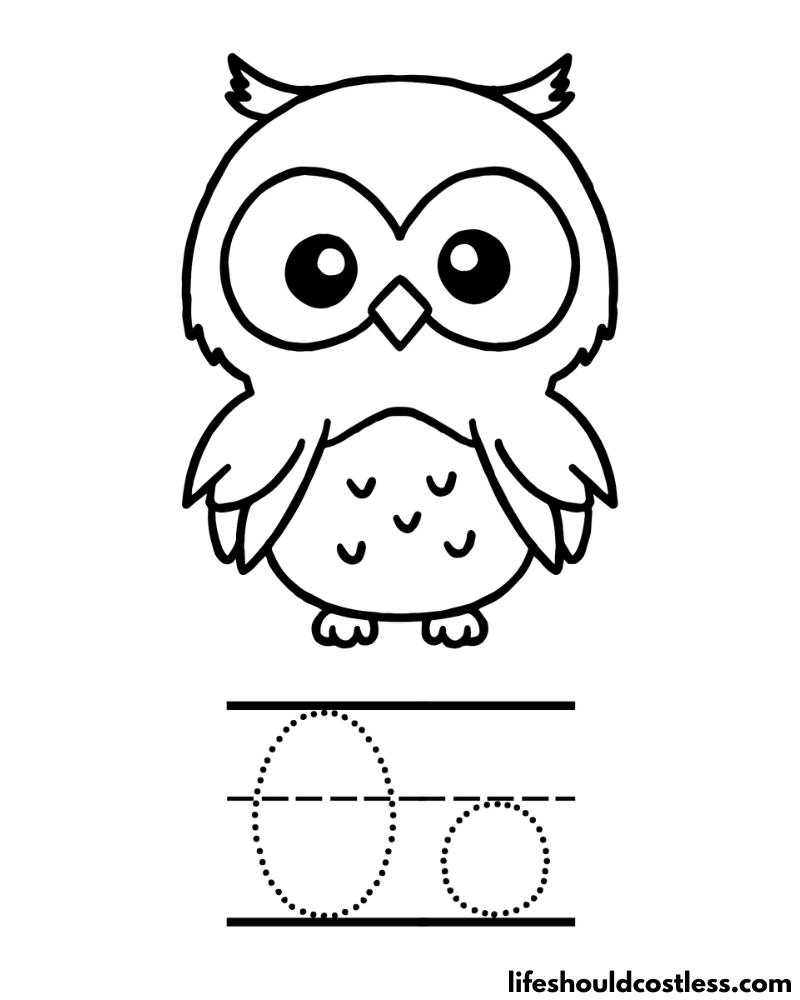

Floral owl designs
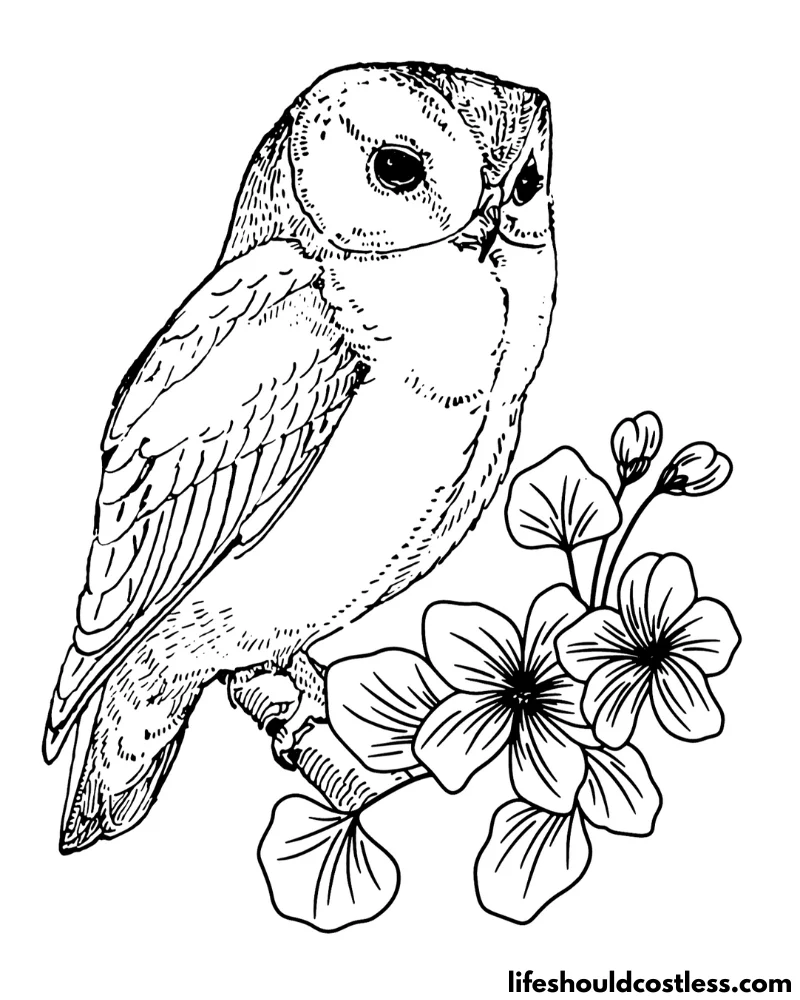
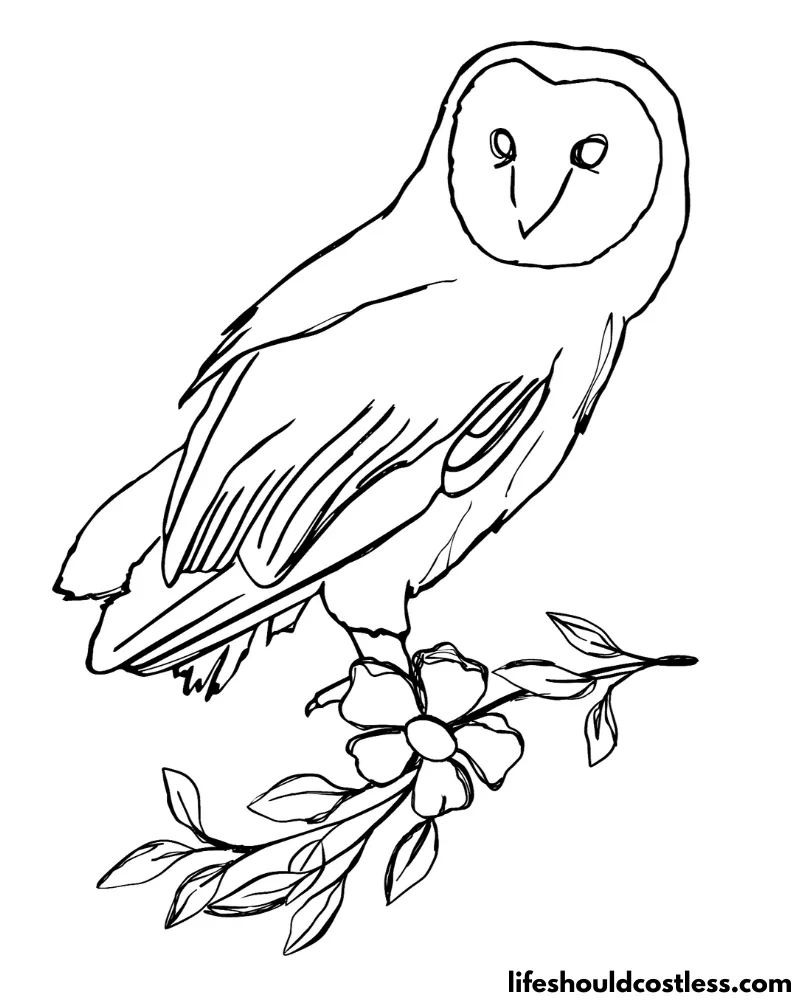

Various owl designs
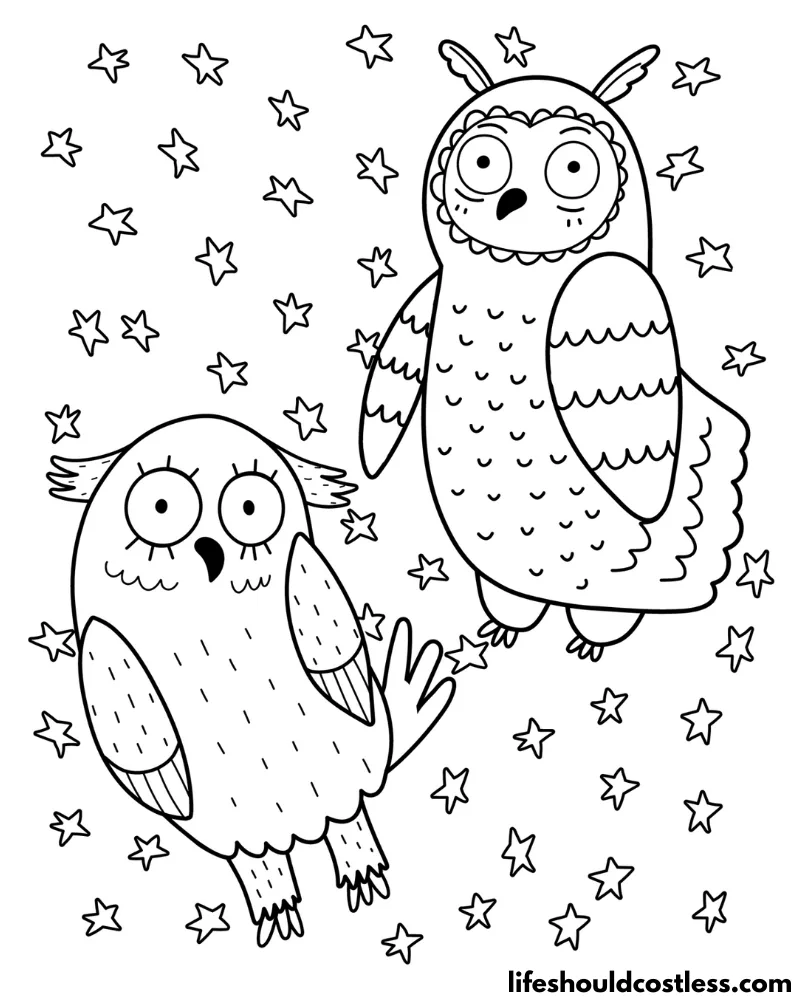
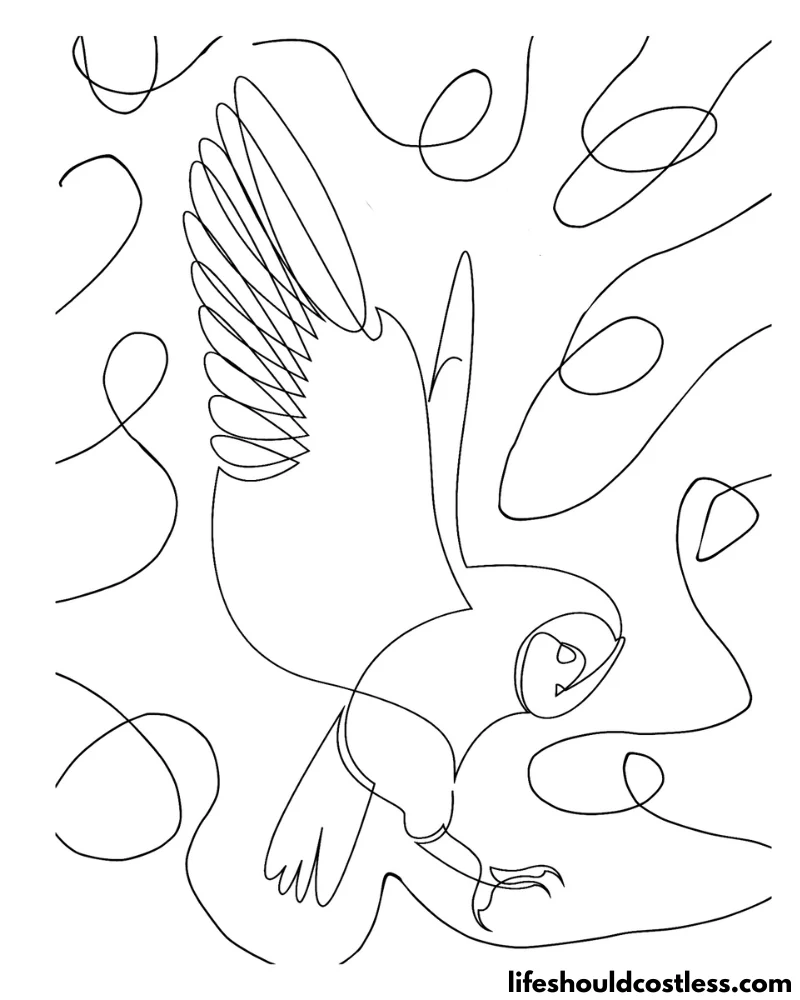
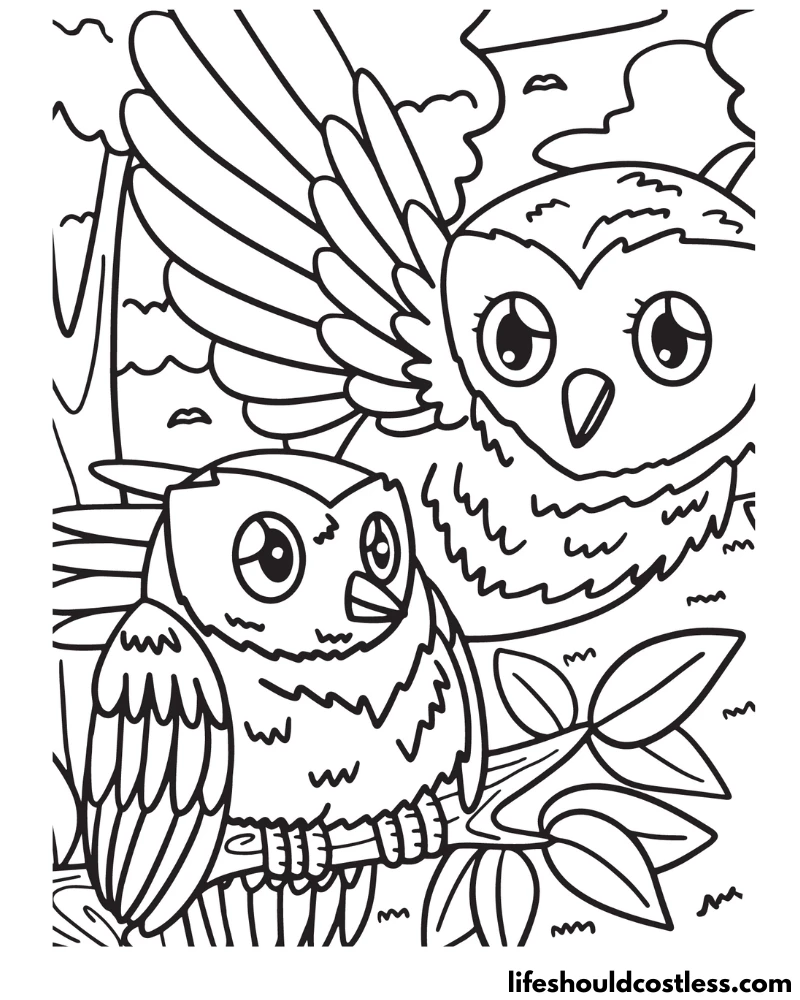
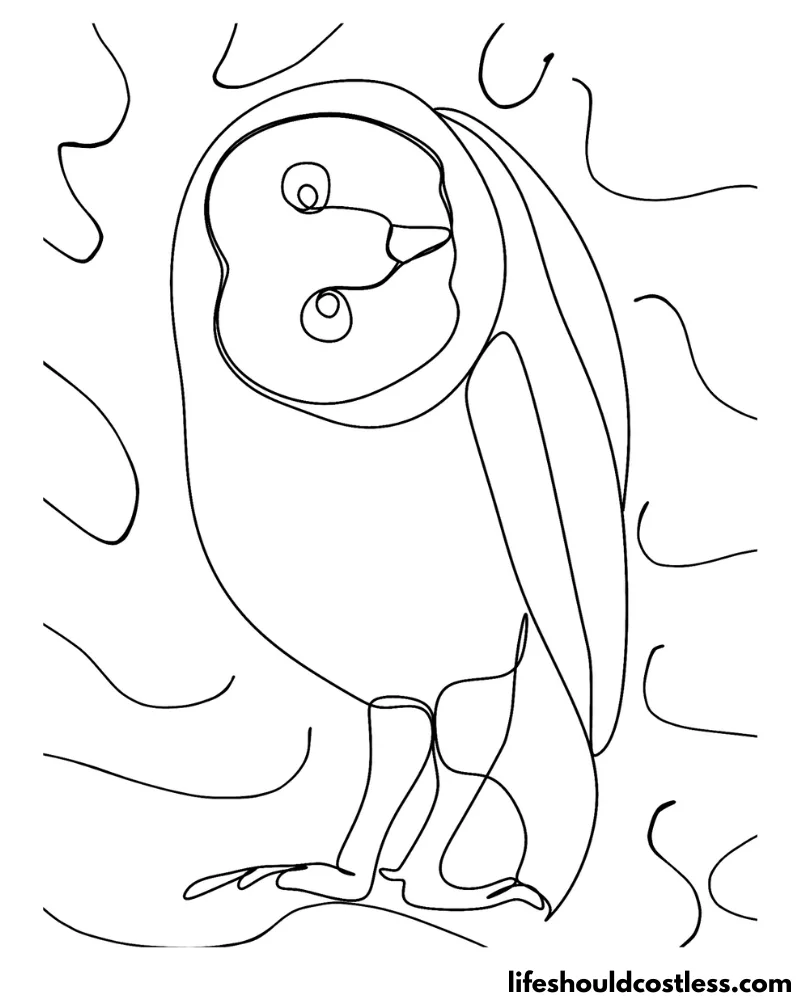
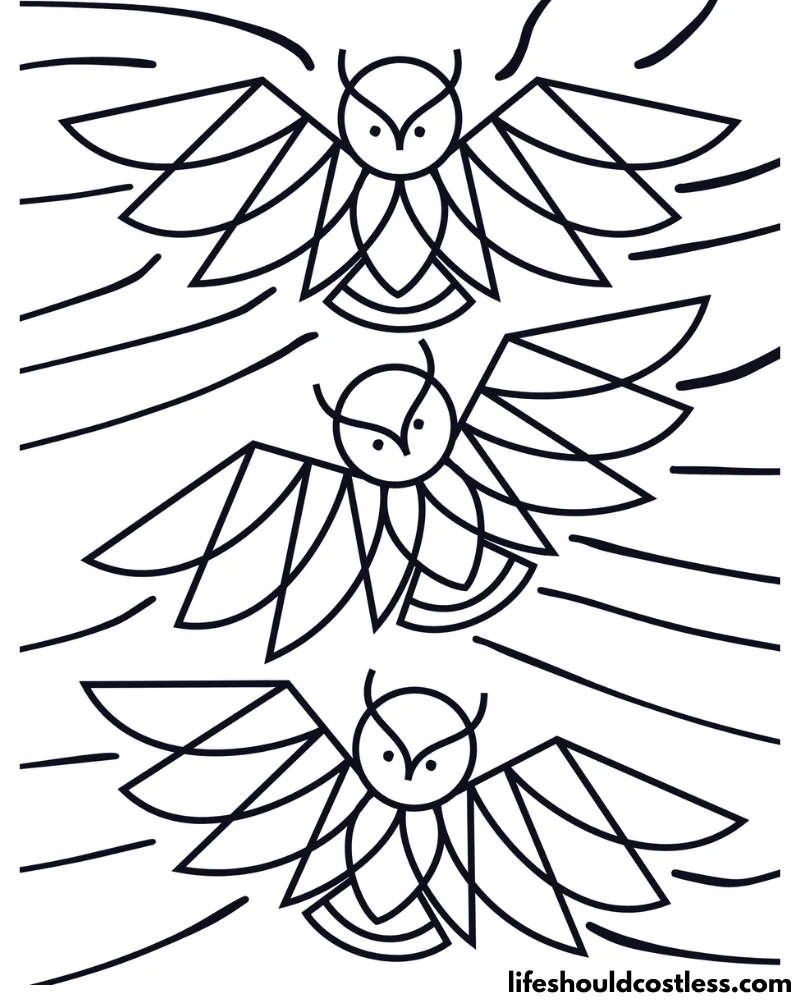
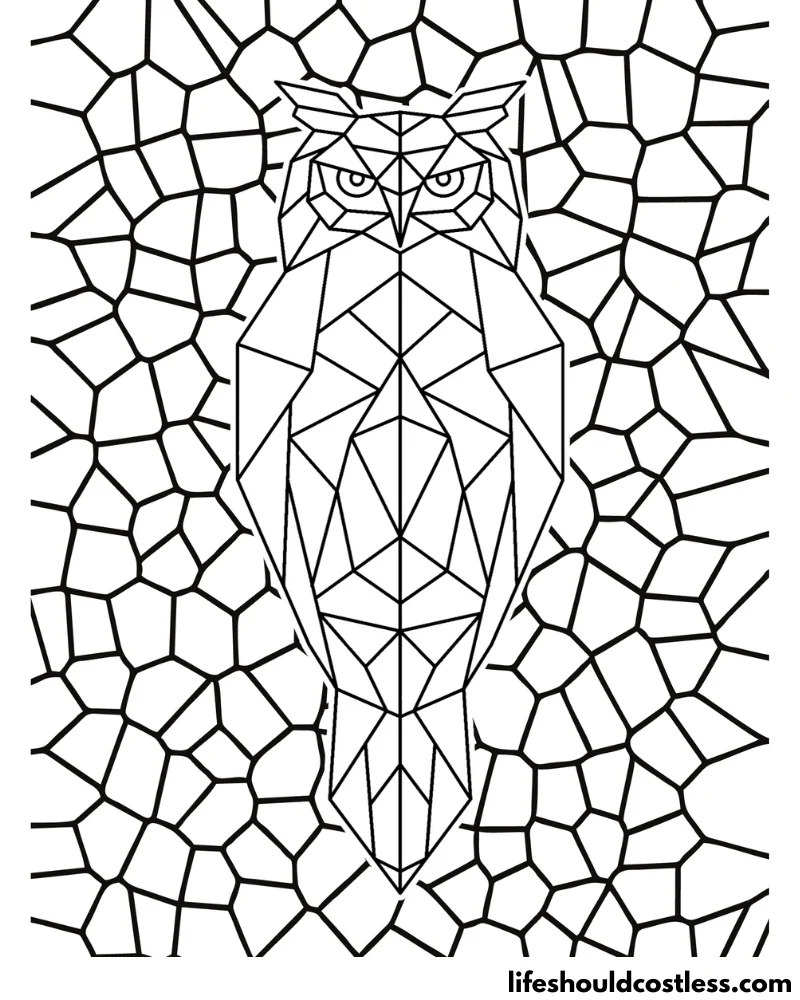
FAQ’s
The color of owls can vary greatly depending on the species. Owls come in a wide range of colors and patterns, allowing them to blend into their natural environments.
Here are some common colorations observed in owl species:
Brown: Many owl species have brown feathers, which can range from light tan to dark chocolate brown. This coloration helps them camouflage among trees and woodland habitats.
Gray: Some owls, like the great gray owl, have predominantly gray feathers, often with intricate patterns that resemble tree bark or lichens.
White: The snowy owl is known for its white plumage, which helps it blend into snowy Arctic landscapes. However, it’s important to note that not all snowy owls are entirely white, as some individuals may display varying amounts of dark spots or barring.
Reddish-brown: Barn owls, for instance, often have a reddish-brown or orange-brown coloration on their upper parts, with paler underparts.
Mottled or speckled: Many owl species feature intricate patterns of mottled or speckled feathers that serve as camouflage. These patterns can incorporate various combinations of colors such as brown, gray, black, white, and even rufous or rusty tones.
Tawny or buff: Some owls, like the eastern screech owl, exhibit tawny or buff-colored feathers, blending in with the bark of trees they inhabit.
It’s important to note that these are general descriptions, and owl colors can vary even within a single species due to factors such as age, gender, and geographic location.
Owls’ coloration is an adaptation that allows them to camouflage effectively and remain hidden from both predators and prey in their specific habitats.
The color of owl eyes can vary depending on the species. Here are some common eye colors observed in different types of owls:
Yellow: Many owl species, including the great horned owl and barn owl, have striking yellow eyes. The intensity of the yellow color can range from pale yellow to a vibrant, piercing yellow hue.
Orange: Some owl species, such as the barred owl and Eurasian eagle owl, have eyes that appear orange. The shade of orange can vary from a deep, fiery hue to a softer, lighter tone.
Dark brown or black: Certain owl species, like the snowy owl and northern hawk owl, have eyes that appear dark brown or almost black. These dark eyes provide a strong contrast against their pale or white feathers.
Pale or light-colored: In some owl species, such as the burrowing owl and screech owl, the eyes can be pale yellow, pale gray, or even pale blue. These lighter eye colors often complement the owl’s overall plumage and blend with their specific habitats.
It’s important to note that eye color can also vary within a species, depending on factors like age, gender, and individual genetic variations.
The color of an owl’s eyes plays a role in its overall appearance and adds to the unique and captivating characteristics of these remarkable birds.
The color of an owl’s beak, or bill, can vary depending on the species. Here are some common colors observed in owl beaks:
Yellow: Many owl species have yellow beaks. The shade of yellow can range from a pale or light yellow to a vibrant, deep yellow color.
Black: Some owl species, such as the great horned owl and barred owl, have black beaks. The black color provides a striking contrast against their feathers.
Gray: Certain owl species, like the barn owl and snowy owl, have gray beaks. The shade of gray can vary, ranging from light gray to darker shades.
Pale or light-colored: In some owl species, the beak may appear pale or light in color, such as off-white or cream. This is particularly observed in species like the northern saw-whet owl and eastern screech owl.
It’s important to note that the color of an owl’s beak can also change with age, gender, and individual variations.
Additionally, some owls may have a combination of colors in their beaks, such as black beaks with yellow cere (the soft area at the base of the beak) or vice versa.
The specific beak color of an owl contributes to its overall appearance and can vary significantly among different species.
*I will add more owl colour / color questions and answers as the questions get sent to me.
In conclusion, owl coloring pages provide a captivating and educational experience for artists of all ages.
These intricate designs allow us to delve into the fun world of owls, igniting our creativity and imagination.
As we carefully select colors and bring these majestic creatures to life, we not only enjoy the process but also learn about their unique characteristics and habitats.
Coloring owl pictures can be a therapeutic and relaxing activity that offers a moment of respite from the demands of everyday life.
Whether you’re seeking a creative outlet, a way to unwind, or a means to bond with loved ones, owl color pages offer a delightful journey of self-expression and discovery.
So grab your coloring tools, embrace the vibrant hues, and let your artistic spirit soar as you embark on a colorful adventure in the world of owls. Happy coloring!
Thanks so much for stopping by my blog and supporting my endeavors to make people’s lives a little easier/better/more affordable.
If you liked this post, or found it helpful in any way, please make sure to share it with your family, friends, and co-workers via social media.
Or you could even send them the direct link via email. Whichever way you choose to spread the love, I super appreciate it! ~Sarah
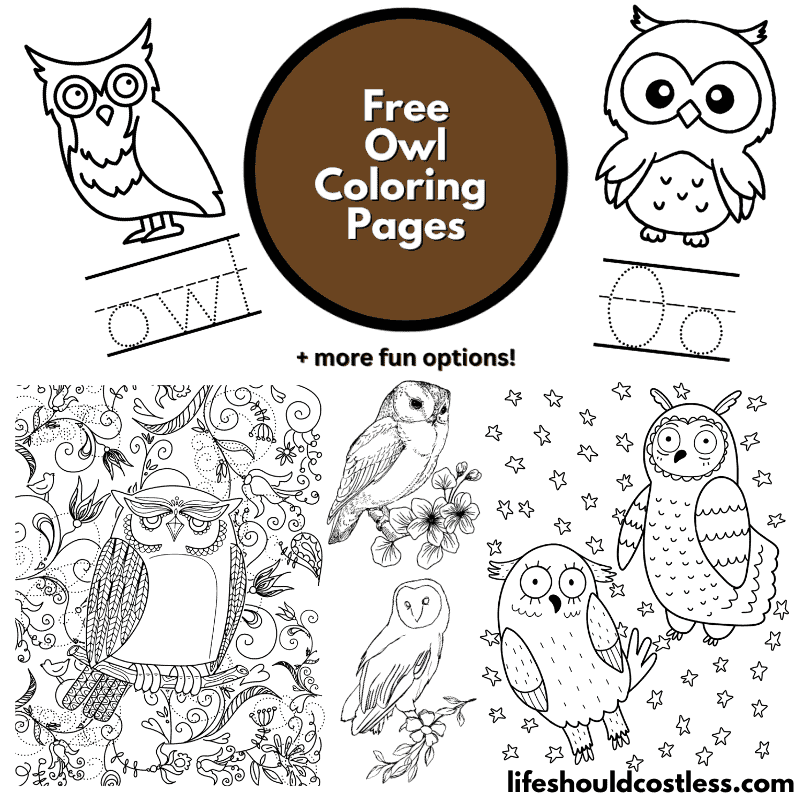
Follow Me
How To Follow & Support This Site
- If you would like to subscribe to my email list, go here.
- Make sure to follow along via social media, by going here.
- If you would like to learn how to really show your support to this site (at no cost to you), go here.
- If you would like to make a direct donation to the site, go here.
Check out my other free printables
- To see all of my free printables, go here.
- To see an alphabetized index of all of my coloring pages, go here.
- To see all of my Animals coloring pages, go here.
- To see all of my Birds coloring pages, go here.
Otherwise, here are direct links to several of my other bird posts that you’re also going to love:
Animals / Birds
Animals / Mammals
Animals / Insects
Other good resources for a printable owl
- https://clipart-library.com/girl-owl-coloring-pages.html
- https://www.dreamstime.com/illustration/owl-coloring-pages.html
- https://www.coloring.ws/owl.htm
*This post was originally shared to this blog on 06/21/2023, & has since been updated to improve user experience, add video instruction, as well as to make it as shareable as possible across the social medias.
**Please note that I do try my hardest to provide factual, but easy to understand, information about each topic. If you notice a discrepancy in my coloring pages, facts, or see something that you deem “misinformation/incorrect” please make sure to notify me about it. I would prefer that you send me an email with a link to a more reputable resource on that subject, so that I can correct it as soon as possible. Thanks so much for helping this site become the best that it can be!
***Resources from djinkers were used in the production of this article.
